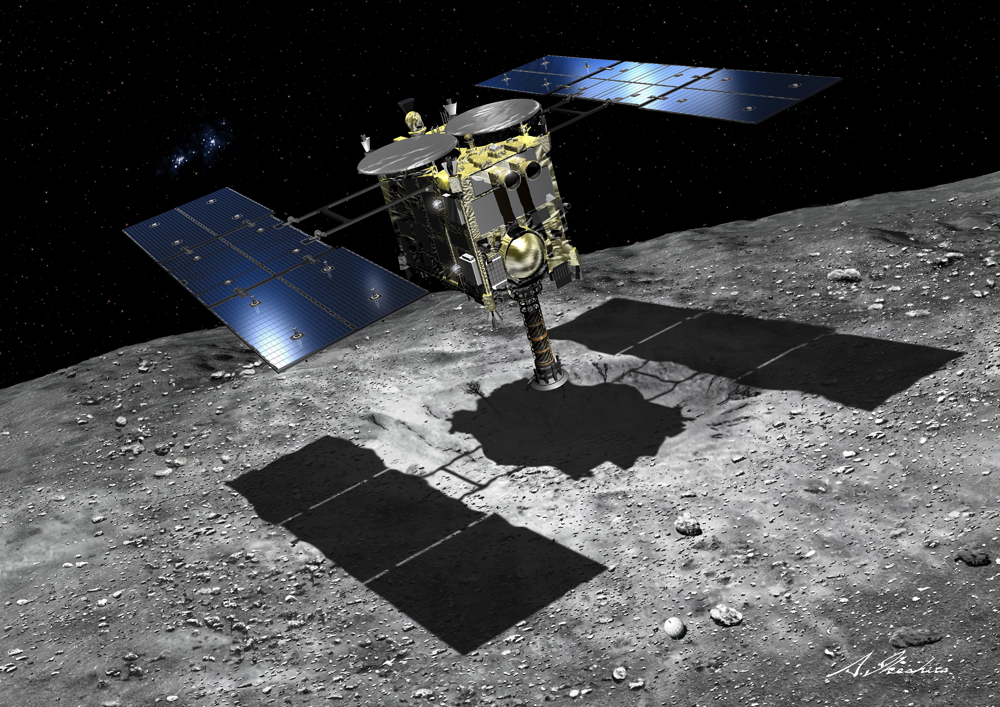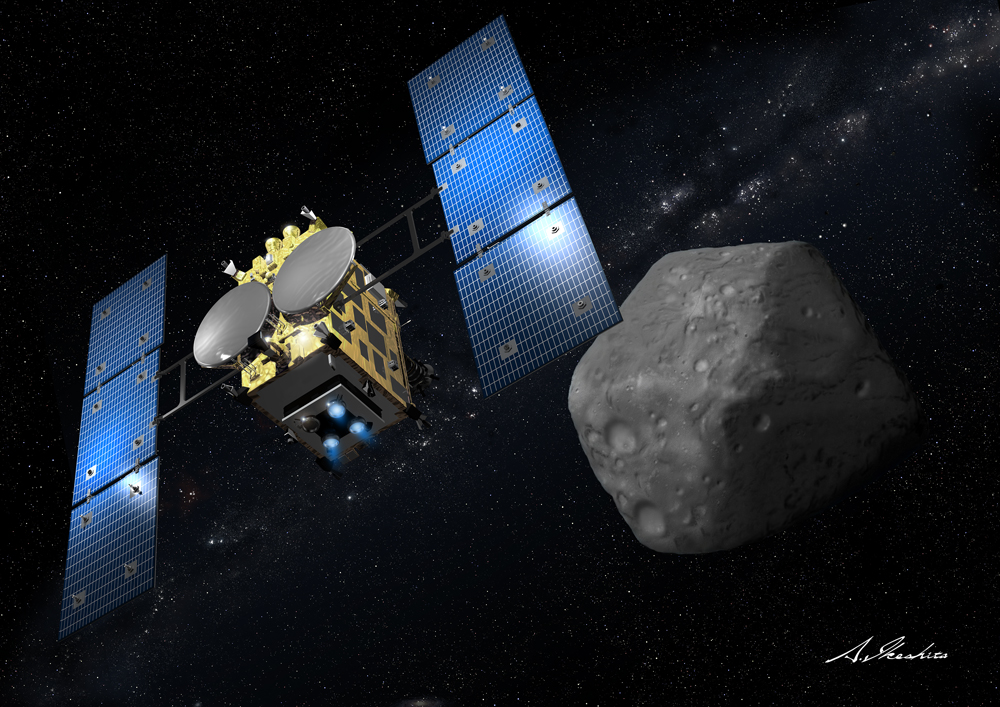콜로퀴움
Mission Status of Hayabusa2 - Final Approach to Asteroid Ryugu 2018-02-05
- Speaker : Dr. Makoto Yoshikawa (JAXA, Hayabusa2 Mission Manager)
- Date : 2018-03-07 16:00 ~ 17:00
- Location : JYS 331-2
- Host : Dr. Hong-Kyu Moon and Dr. Young-Jun Choi
Hayabusa2 is the second sample return mission from an asteroid after Hayabusa mission. The target asteroid is (162173) Ryugu, which is a C-type asteroid. The main science objective is to investigate organic matters and water at the beginning of the solar system. The technological purpose is to maturate the new technology developed by Hayabusa and to develop other new technology for space missions.
Hayabusa2 was launched December 3, 2014 by an H-IIA launch vehicle from Tanegashima Space Center in Japan. Just one year later, on December 3, 2015, Hayabusa2 came back to the Earth to execute the Earth gravity assist, which was successfully done and its orbit was changed toward Ryugu. We observed the Earth and the moon by using the remote sensing instruments on board at the Earth gravity assist. Then after three long-term ion engine operations, Hayabusa2 will arrive at Ryugu in June or July of 2018. At first, we will observe Ryugu carefully and decide the landing place. Then we will release the lander and rovers, execute touchdown once or twice, and try the experiment of the impactor. Hayabusa2 will leave Ryugu at the end of 2019 and bring back the capsule to the Earth at the end of 2020.
At present, we are just before arriving at Ryugu. In order to prepare for the operations near the asteroid, we have done two kinds of trainings, that is, Landing Site Selection (LSS) training and Real-Time Integrated Operation (RIO) training. We hope we can explore Ryugu smoothly and we are sure that we can study a lot of new things from Ryugu.


